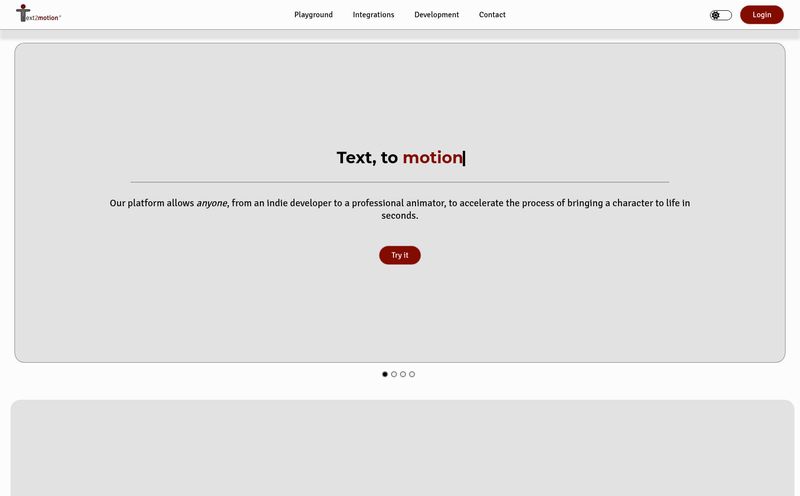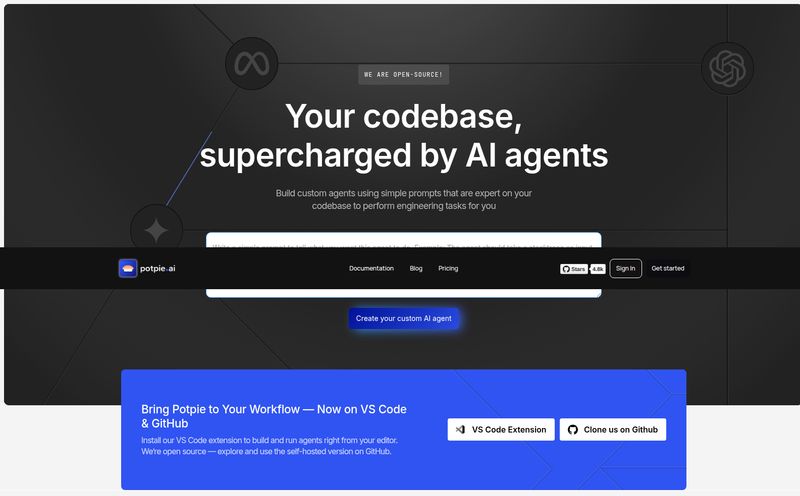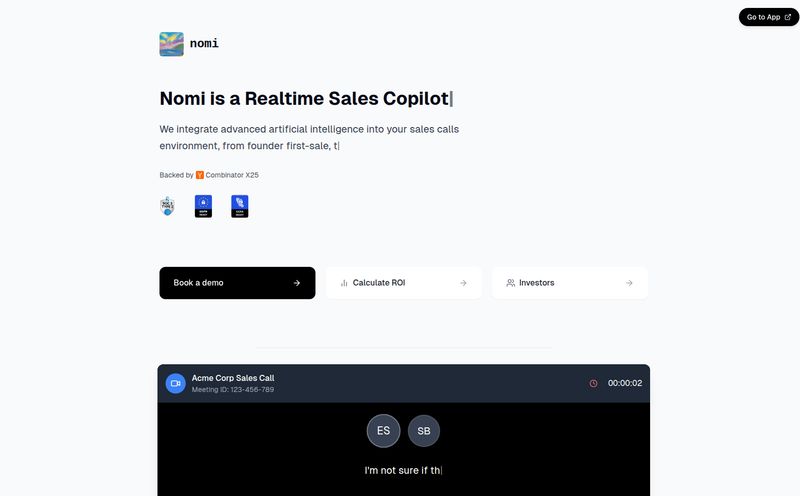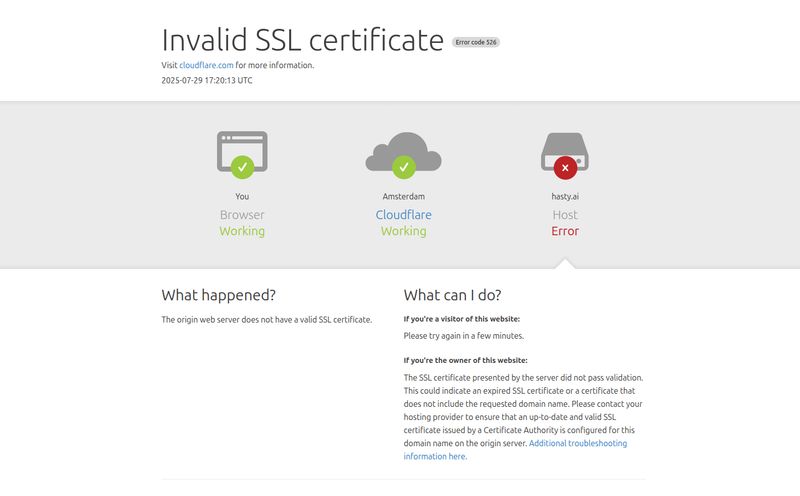If you're managing a software team, you live in a world of perpetual pressure. The business wants features yesterday. The backlog is a living creature that only ever seems to grow. And that little thing called 'technical debt'? It’s less of a debt and more of a high-interest loan shark hanging out in your codebase, making every future move more painful and expensive.
I’ve been in and around this world for years, watching the parade of tools that promise to solve everything. You know the ones. They claim they'll make your developers 10x more productive overnight. Usually, it's just a new UI on an old idea. So when a tool like Astronuts.io comes along calling itself a "software engineering Co-Pilot," my built-in hype detector starts twitching. But this one... this one feels a little different.
It’s not just about writing code faster. It's about understanding the entire engineering process, from the first line of a pull request to the metrics that your CTO actually cares about. So, is it just another shiny object, or is it a genuine mission control for your dev team? Let's take a look.

Visit Astronuts
So, What Exactly Is Astronuts?
Okay, cutting through the marketing jargon. Astronuts isn’t trying to replace your developers. It’s trying to give them (and you) a second brain. It hooks directly into the tools your team already uses—think GitHub, GitLab, Jira, Slack, etc.—and starts analyzing everything. It’s a metrics platform, an AI assistant, and a knowledge base all rolled into one.
Think of it less as a single tool and more as an intelligent layer over your existing workflow. Its goal is to surface the bottlenecks, crush the inefficiencies, and basically stop your team from flying blind. For years, we’ve relied on gut feelings and story points (which we all know are mostly fiction) to measure progress. Astronuts wants to replace that with cold, hard data. And I, for one, am here for it.
Breaking Down the Core Features
A tool is only as good as its features, right? Here’s what Astronuts brings to the launchpad.
The Metrics Dashboard: Your Engineering Mission Control
This is the heart of the platform for any manager or team lead. Astronuts provides a comprehensive dashboard that tracks the stuff that actually matters. We're talking about key DORA metrics and more:
- Cycle Time: How long does it really take for an idea to go from a ticket to being live? Not just coding time, but review time, QA time, sitting-in-the-merge-queue time. Seeing this number drop is a beautiful thing.
- Defect Rate: How often are your pushes introducing new bugs? This is a direct measure of quality.
- Technical Debt: This one is huge. The tool claims to help you actually quantify and decrease your tehcnical debt. For so many companies, tech debt is this vague, scary monster. Putting a number on it is the first step to taming it.
Having this data isn't about micromanaging; it's about seeing the system. It helps you answer questions like, "Are our PR reviews taking too long?" or "Is this one part of the codebase generating way more bugs than everything else?"
Intellidocs: The Search Engine for Your Own Code
Have you ever onboarded a new engineer and watched the light leave their eyes as they try to understand a sprawling, poorly documented codebase? I have. It's painful. Intellidocs aims to solve this. It's a search engine that indexes your entire codebase, documentation, and issue trackers. A developer can ask a natural language question like, "How does our authentication service handle token refreshes?" and get an actual answer with links to the relevant code. This could be an absolute game-changer for productivity and reducing developer frustration.
The AI Co-Pilot for Day-to-Day Development
Yes, there's an AI assistant, but it seems more integrated into the workflow than just a simple code-suggester. It provides insights directly on Pull Requests and in issue trackers. It can help summarize changes, suggest improvements, and spot potential issues before a human reviewer even lays eyes on the code. It’s like having a senior engineer constantly available for a quick pair-programming session.
AstroCoins and Gamification? Okay, Hear Me Out...
I’ll be honest, when I saw "Gamification," I cringed a little. The corporate world's attempts at making work 'fun' can often feel... patronizing. But the implementation here with "AstroCoins" is interesting. Teams and individuals earn coins for positive engineering practices: writing good documentation, doing timely code reviews, fixing bugs, and mentoring others. These coins can then be redeemed for rewards.
I'm still a bit on the fence, but I see the potential. It’s not just about shipping features; it’s about rewarding the behaviors that lead to a healthy, sustainable engineering culture. It could be a clever way to boost morale and encourage the un-glamorous work that often gets overlooked.
The Big Promises: Can Astronuts Really Deliver These Numbers?
The claims on their site are bold. Let's not mince words. They're promising some pretty staggering improvements. I’ve put them in a table just to see them all in one place.
| Metric | Promised Improvement |
|---|---|
| Productivity | +50% |
| Cycle Time | -30% |
| Technical Debt | -40% |
| Defect Rate | -30% |
Are these numbers realistic? For every single team? Probably not. Your mileage will always vary. But here's my take: if a tool could deliver even half of these gains, it would pay for itself almost instantly. A 20% reduction in technical debt or a 15% faster cycle time is a massive win for any organization. These figures should be seen as the North Star—the ideal outcome that the tool is designed to help you achieve.
What's the Damage? A Look at Pricing
And now for the million-dollar question... or, hopefully, a much smaller question. What does Astronuts cost? As of right now, there's no public pricing page. This is pretty standard for B2B SaaS platforms targeting mid-size to enterprise teams. They typically want to talk to you, understand your team's size and needs, and give you a custom quote.
My advice? Don't let the lack of a pricing table scare you off. If the problems this tool solves are problems you have, it's worth booking a demo and getting a number. The ROI on fixing a broken engineering workflow is almost always worth the investment.
My Final Take: Is Astronuts Ready for Liftoff?
I've seen a lot of tools. Most are incremental improvements. Astronuts feels more ambitious. It's trying to provide a holistic view of the software development lifecycle, combining quantitative metrics with qualitative improvements like better documentation and AI assistance.
Who is this for? I think it’s a perfect fit for a few profiles: the scale-up that's growing fast and feeling the pains of complexity; the established enterprise with a legacy system that's drowning in tech debt; or any engineering leader who feels like they lack true visibility into their team's performance.
The only real 'con' I can see is that it's another tool in the stack and might face resistance from teams who are skeptical of gamification or performance metrics. But the benefits, particularly from features like Intellidocs and the deep metrics dashboard, seem to strongly outweigh those potential hurdles. It's an impressive package that seems genuinely focused on solving real-world engineering problems.
Frequently Asked Questions
- What is Astronuts in simple terms?
- It's an AI-powered platform that plugs into your engineering tools (like GitHub and Jira) to give you data on your team's performance, help developers with an AI assistant, and make your codebase searchable.
- How is Astronuts different from something like GitHub Copilot?
- GitHub Copilot is primarily a code completion tool for individual developers. Astronuts is a platform for the whole team and its management, focusing on metrics, workflow, technical debt, and team-wide knowledge sharing, in addition to AI assistance.
- Is Astronuts suitable for a small startup?
- It could be. While it seems built for larger teams facing complexity, a startup that wants to build good habits and metrics from day one could find it incredibly valuable. The Intellidocs feature alone would be a huge help for a small, fast-moving team.
- How does the AstroCoins gamification work?
- Engineers earn "AstroCoins" for performing positive actions that contribute to code health and team collaboration, like timely code reviews, reducing bugs, or writing clear documentation. It's a system to reward good engineering citizenship.
- Does Astronuts replace project management tools like Jira?
- No, it integrates with them. It pulls data from tools like Jira to provide its insights and metrics. You would continue to use your existing project management software.
Final Thoughts
In a field crowded with solutions, Astronuts stands out by taking a wider view. It’s not just about code, it’s about the entire ecosystem that produces it. By combining hard data with smart AI assistance and a clever shot at improving team culture, it presents a compelling case. If you're tired of flying blind and want to bring a data-driven mission control to your engineering org, Astronuts is definitely worth putting on your radar.
Reference and Sources
- Astronuts Official Website: https://astronuts.io
- DORA Metrics Explained by Google Cloud: Google Cloud DevOps Blog



